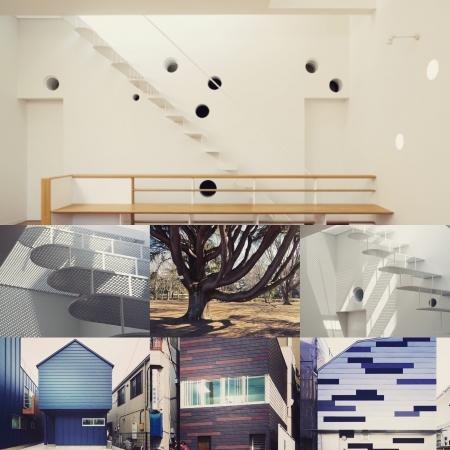図の印象
過去の記憶や体験が「地」となり、今目の前で起こっていることを「図」として浮かび上がらせて認識する。この場合、地も図も現象になるのだろうが、同じような現象では図が浮かび上がらず、図として認識されない。
空間認識もこれと同じで、地としての記憶や空間体験が今目の前にある図として空間の認識に影響を与えることになる。地は認識する個人により違うので、図の認識のされ方も個人により違ってくるが、個人の地でも他の個人と共通な領域があるから、その領域にある図としての空間は浮かび上がらず、図として認識されず印象にも残らない。
印象に残すためには、個人の地の共通な領域にある記憶や空間体験とは違う図としての空間をつくる必要があり、そのためにはどうすればいいかを考えている。
ひとつの方法として、見た目でわかるくらいな共通領域にある地との違いを出すことだが、それはよくあるつくり方で、時に違和感という印象が図に伴うことがあり、必ずしも良い方法ではない場合がある。
"Impression of the figure"
The memories and experiences of the past become the "earth", and what is happening in front of us now emerges as a "figure" and is recognized. In this case, both the ground and the figure will be phenomena, but in the same phenomenon, the figure does not emerge and is not recognized as a figure.
Spatial cognition is the same as this, and memory as the earth and spatial experience will affect the perception of space as a figure in front of us. Since the ground differs depending on the individual who recognizes it, the way the figure is recognized also differs depending on the individual, but since there is an area in common with other individuals even in the individual land, the space as a figure in that area does not emerge. It is not recognized as a figure and does not leave an impression.
In order to leave an impression, it is necessary to create a space as a diagram that is different from the memory and spatial experience in the common area of the individual's land, and I am thinking about what to do for that.
One way is to make a difference from the ground that is in a common area that you can see visually, but it is a common way of making, and sometimes the impression of discomfort accompanies the figure, so it may not always be a good method. ..


